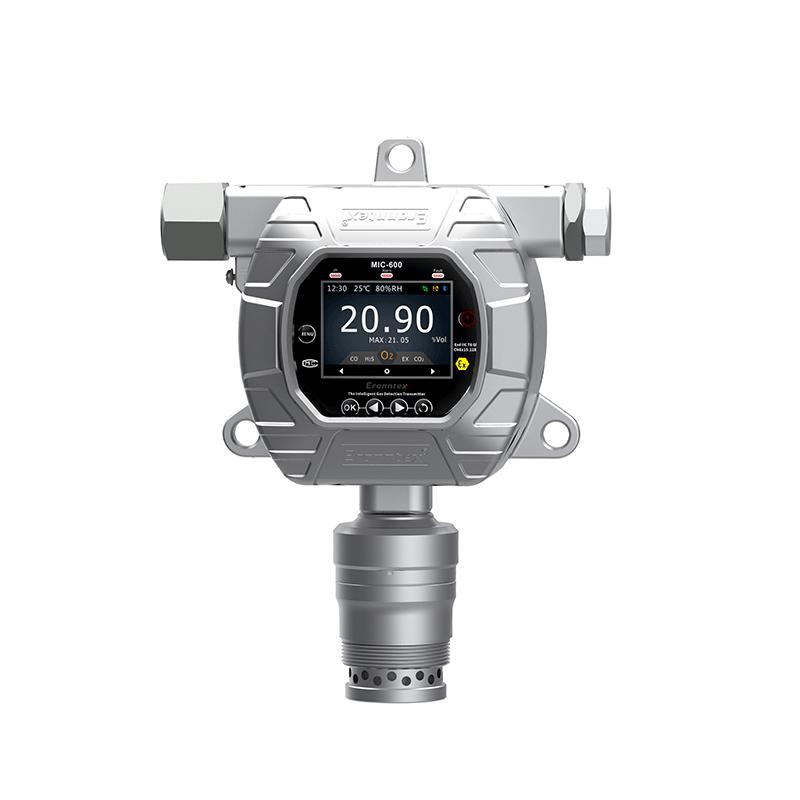- English
- Español
- Português
- русский
- Français
- 日本語
- Deutsch
- tiếng Việt
- Italiano
- Nederlands
- ภาษาไทย
- Polski
- 한국어
- Svenska
- magyar
- Malay
- বাংলা ভাষার
- Dansk
- Suomi
- हिन्दी
- Pilipino
- Türkçe
- Gaeilge
- العربية
- Indonesia
- Norsk
- تمل
- český
- ελληνικά
- український
- Javanese
- فارسی
- தமிழ்
- తెలుగు
- नेपाली
- Burmese
- български
- ລາວ
- Latine
- Қазақша
- Euskal
- Azərbaycan
- Slovenský jazyk
- Македонски
- Lietuvos
- Eesti Keel
- Română
- Slovenski
- मराठी
- Srpski језик
How to use gas detectors to prevent safety accidents in industrial production?
2024-10-18
In the field of industrial production, safety has always been the cornerstone of enterprise development. Any safety accident may bring immeasurable losses and even threaten the lives of employees. With the advancement of science and technology, gas detectors, as an important safety monitoring equipment, have been widely used in various industrial production environments, effectively preventing safety accidents caused by toxic and harmful gas leakage, hypoxia or excessive concentration of combustible gas. Let's follow the editor of Zetron Technology to discuss how to use gas detectors to prevent safety accidents in industrial production.

The following are detailed steps and measures on how to use gas detectors to prevent safety accidents:
I. Clarify detection needs
Enterprises need to clarify the types and concentration ranges of gases that need to be detected based on their own production processes, raw material characteristics and operating environment. This includes combustible gases, toxic gases, oxygen, etc., to ensure that the selected gas detector can meet actual needs.
II. Choose a suitable gas detector
Type selection: According to the properties of the detected gas, choose a suitable detector type, such as electrochemical, catalytic combustion, infrared absorption, etc.
Accuracy requirements: Ensure that the detector has sufficient measurement accuracy and stability to meet the requirements of safe production.
Explosion-proof performance: In flammable and explosive environments, gas detectors with explosion-proof performance should be selected to ensure the safety of the detection process.
III. Reasonable installation and layout
Installation location: Install the gas detector near the source of possible gas leakage, crowded working areas, and poorly ventilated areas to detect leaks in time.
Layout planning: According to the layout of the production workshop and the gas flow characteristics, the installation location and number of detectors should be reasonably planned to ensure that the monitoring range is comprehensive and has no dead ends.
IV. Regular calibration and maintenance
Regular calibration: Calibrate the gas detector regularly according to the manufacturer's requirements or relevant standards to ensure the accuracy and reliability of the measurement results.
Maintenance: Regularly check whether the appearance, sensors, connecting wires and other components of the detector are intact, clean dust and dirt in time, and keep the detector clean and dry.
V. Formulate emergency plans
Alarm response: Develop a detailed alarm response process to clarify the responsibilities and response measures of personnel in each position when the gas detector sends an alarm signal.
Evacuation drills: Regularly organize employees to conduct evacuation drills to improve their emergency response capabilities and self-protection awareness in emergency situations.
VI. training and publicity
Employee training: Train new employees on the use of gas detectors and emergency response measures to ensure that employees can master the operating skills of the detectors.
Safety publicity: Popularize gas safety knowledge to employees through publicity boards, safety meetings, etc., to improve their safety awareness and self-protection capabilities.
VII. real-time monitoring and data analysis
Real-time monitoring: Use the real-time monitoring function of the gas detector to continuously monitor the gas concentration in the production environment and detect abnormal conditions in time.
Data analysis: Regularly analyze the monitoring data, evaluate the safety of the production environment, and provide data support for safe production.
In summary, through comprehensive consideration of clarifying the detection needs, selecting appropriate gas detectors, reasonable installation and layout, regular calibration and maintenance, formulating emergency plans, training and publicity, and real-time monitoring and data analysis. We can effectively monitor and control the concentration of harmful gases in the production environment, detect and eliminate safety hazards in time, and escort the safe production of enterprises. At the same time, this also requires us to continue to explore and innovate to promote the continuous progress and development of gas detection technology.







